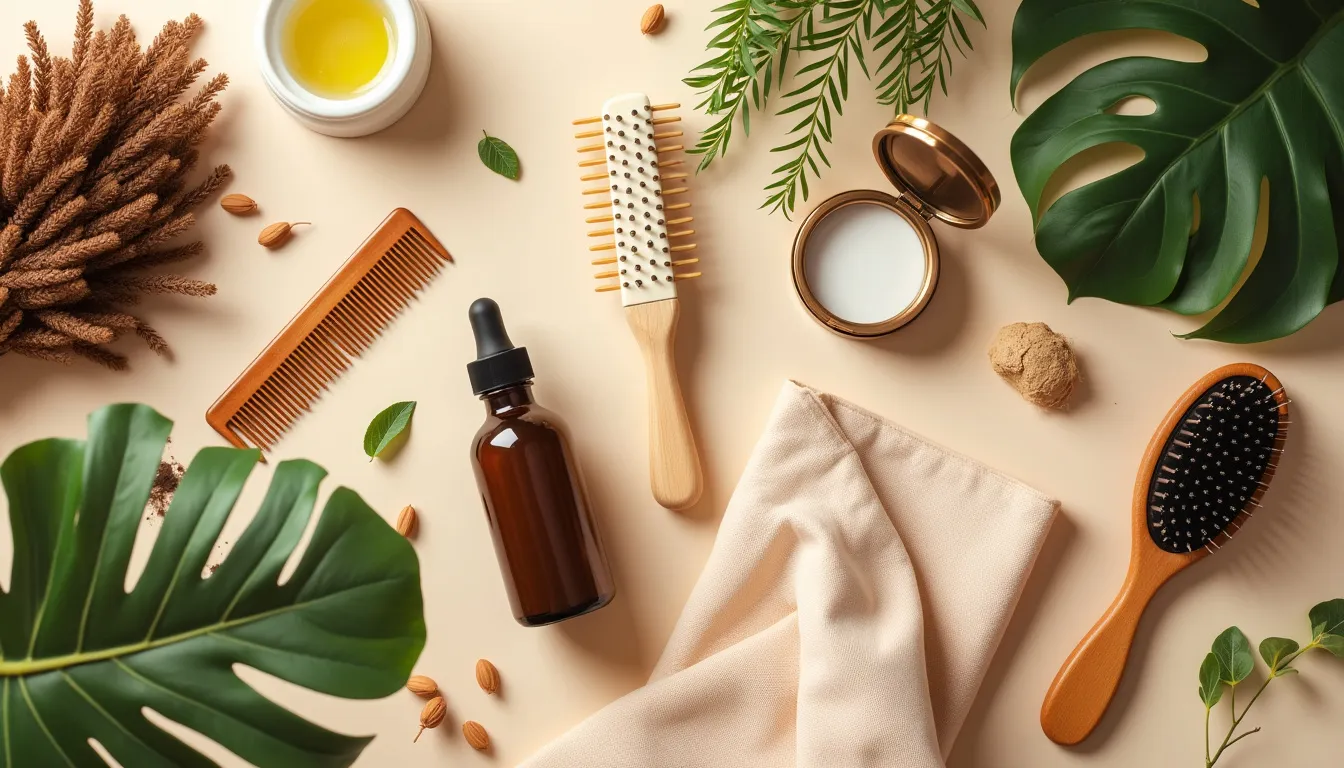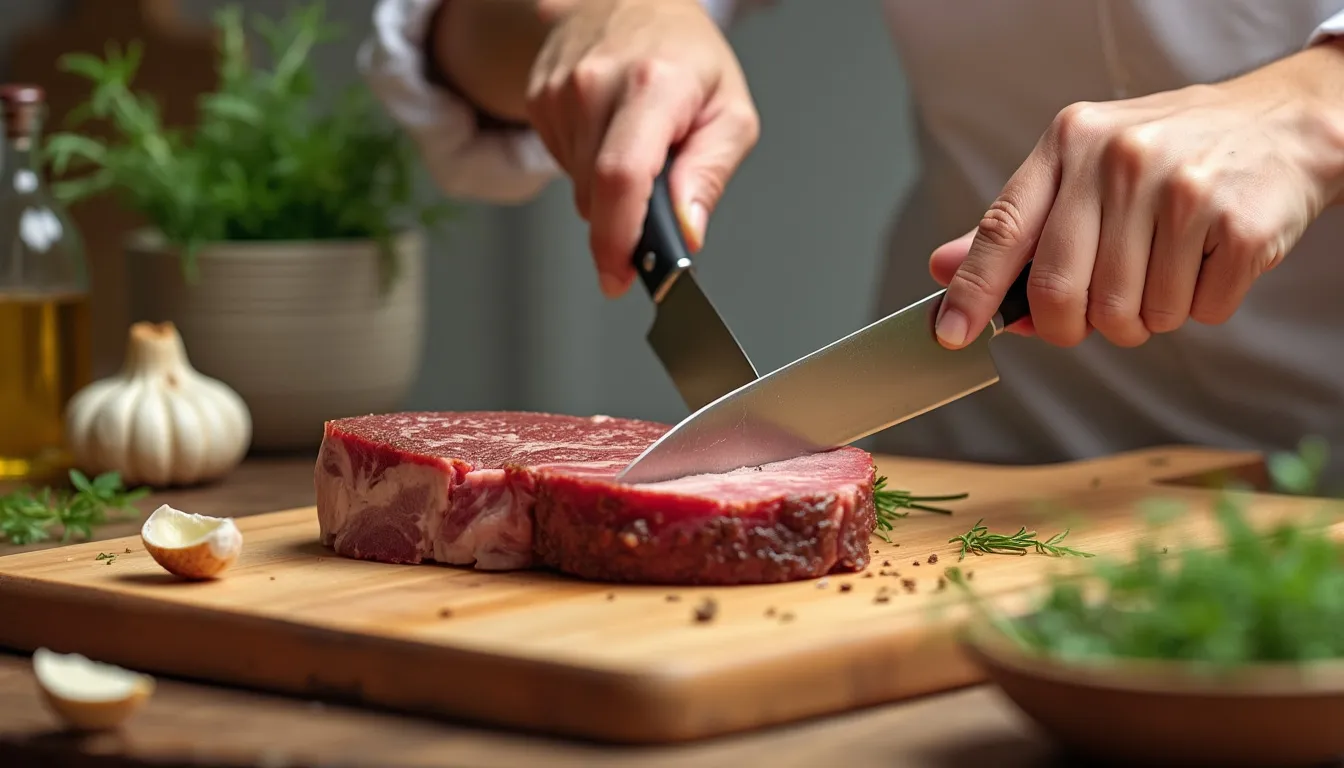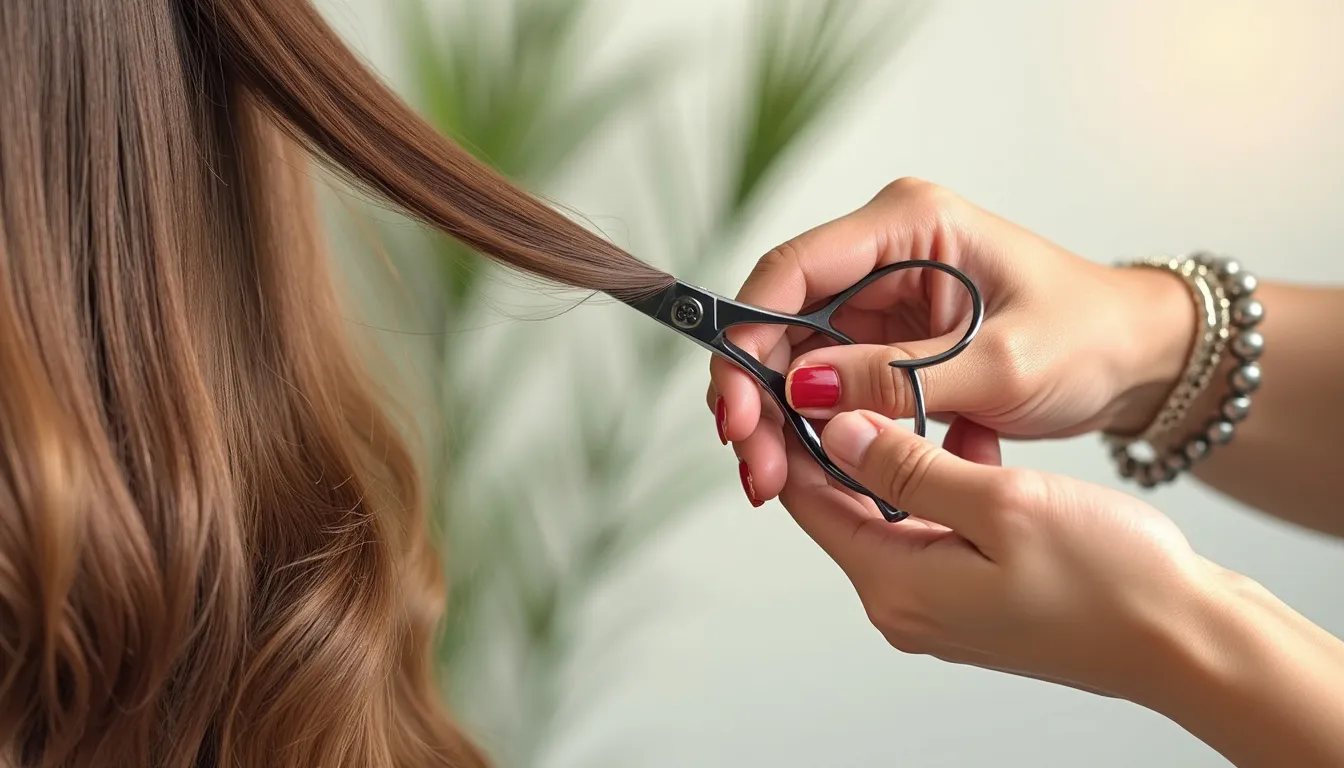Are you tired of struggling with thick, unmanageable hair edges that just won’t cooperate? Thinning edges can be a game-changer in hair styling, offering a sleek, polished look that’s both versatile and easy to maintain. Whether you’re a professional stylist or a DIY enthusiast, mastering the art of thinning edges can elevate your hairstyling game to new heights. In this comprehensive guide, we’ll explore five easy techniques for thinning edges that will transform your hair from bulky to beautifully balanced. From understanding the basics of thinning edges to selecting the right tools and mastering step-by-step methods, we’ve got you covered. Say goodbye to frizzy, unruly edges and hello to smooth, manageable hair that’s a breeze to style. Whether you’re looking to create a more natural-looking hairline, reduce bulk, or simply achieve a more refined appearance, these techniques will help you achieve the perfect look. So, grab your styling tools and get ready to discover the secrets of thinning edges that professional hairstylists swear by. Your journey to fabulous, easy-to-style hair starts here!
Understanding Thinning Edges
Thinning edges is a common concern in the world of hair styling, affecting both men and women alike. But what exactly are thinning edges, and why do they matter? Let’s dive into the nitty-gritty of this hair phenomenon and debunk some myths along the way.
What Are Thinning Edges?
Thinning edges, also known as edge breakage or hair loss around the hairline, refer to the gradual reduction in hair density and volume along the perimeter of your scalp. This often results in a receding hairline or patchy areas around the temples and forehead. While it’s a natural part of aging for many, thinning edges can also be caused by various factors, including:
- Genetics
- Hormonal changes
- Excessive styling and manipulation
- Tight hairstyles that put stress on the hairline
- Nutritional deficiencies
- Certain medical conditions
Understanding the root cause of your thinning edges is crucial in addressing the issue effectively. It’s always a good idea to consult with a trichologist or dermatologist if you’re experiencing significant hair loss along your hairline.
Why Addressing Thinning Edges Matters in Hair Styling
Thinning edges can have a significant impact on your overall hairstyle and appearance. Here’s why paying attention to your edges is so important:
- Frame your face: Your edges play a crucial role in framing your face and defining your hairstyle. Healthy, full edges can enhance your facial features and complete your look.
- Versatility in styling: Well-maintained edges allow for greater versatility in styling options, from sleek updos to casual everyday looks.
- Boosting confidence: Addressing thinning edges can significantly boost your self-esteem and confidence in your appearance.
- Preventing further damage: By addressing thinning edges early on, you can prevent further hair loss and maintain a healthier hairline.
Professional hairstylists understand the importance of working with thinning edges to create balanced, flattering hairstyles for their clients. By incorporating techniques specifically designed for thinning edges, stylists can help their clients achieve fuller-looking hair and minimize the appearance of hair loss.
Common Misconceptions About Thinning Edges
When it comes to thinning edges, there are several myths and misconceptions that can lead to ineffective treatments or even further damage. Let’s set the record straight on some of these common misunderstandings:
Myth 1: Thinning edges only affect older people
Reality: While age-related hair loss is common, thinning edges can affect people of all ages. Factors like genetics, styling habits, and health conditions can contribute to edge thinning in younger individuals as well.
Myth 2: Constantly brushing your edges promotes growth
Reality: Excessive brushing or manipulation of your edges can actually lead to more breakage and damage. Gentle care and protective styling are more beneficial for maintaining healthy edges.
Myth 3: Thinning edges are always permanent
Reality: In many cases, thinning edges can be improved or even reversed with proper care, treatment, and lifestyle changes. However, success depends on the underlying cause and how early the issue is addressed.
Myth 4: You need expensive products to regrow thinning edges
Reality: While some specialized products can be helpful, many effective treatments for thinning edges involve simple, natural remedies and lifestyle changes. Consistency in care is often more important than the price tag of your products.
Myth 5: Thinning edges only affect women
Reality: Both men and women can experience thinning edges. While the patterns and causes may differ, it’s a concern that crosses gender lines.
By dispelling these myths, we can approach the issue of thinning edges with a more informed and effective mindset. Understanding the true nature of edge thinning is the first step in addressing the problem and achieving healthier, fuller-looking hair.
As we delve deeper into the world of thinning edges, it’s important to remember that everyone’s hair journey is unique. What works for one person may not work for another, which is why it’s crucial to experiment with different techniques and find what suits your hair best. In the following sections, we’ll explore various tools, products, and techniques that can help you manage and style thinning edges effectively.
If you’re looking for additional support in your hair care journey, consider checking out the Fortify program, which offers comprehensive solutions for hair loss and thinning issues.

Essential Tools and Products for Thinning Edges
When it comes to addressing thinning edges, having the right tools and products at your disposal can make all the difference. Whether you’re a professional stylist or someone looking to manage your own hair at home, understanding the essential equipment and solutions for thinning edges is crucial. Let’s explore the recommended tools, specialized products, and even some natural remedies that can help you achieve the perfect look while maintaining hair health.
Recommended Thinning Shears and Razors
Thinning shears and razors are the primary tools used for creating thinning edges. These specialized instruments allow for precise control and can dramatically improve the overall appearance of your hairstyle.
- Thinning Shears: Also known as texturizing scissors, these tools have teeth on one or both blades. They remove a percentage of hair with each cut, making them ideal for thinning edges without creating harsh lines. Look for shears with 30-40 teeth for more delicate work around the edges.
- Razor Combs: These combine a comb with a razor blade, allowing for seamless thinning and texturizing. They’re particularly useful for creating soft, feathered edges.
- Straight Razors: While requiring more skill to use, straight razors offer unparalleled precision for thinning edges. They’re excellent for creating texture and removing bulk from thicker hair types.
When choosing your tools, consider factors like the type of hair you’ll be working with, your skill level, and the specific thinning technique you plan to use. Investing in high-quality tools can lead to better results and reduce the risk of damaging the hair.
Hair Products Specifically Designed for Thinning Edges
In addition to the right tools, using appropriate hair products can enhance the appearance of thinned edges and promote overall hair health. Here are some products specifically formulated to address thinning edges:
- Edge Control Gels: These products help to smooth and define thinned edges, providing a polished look. Look for formulas that offer hold without causing buildup or flaking.
- Volumizing Mousses: Applied to damp hair before styling, these can add body and thickness to thinning areas, creating the illusion of fuller edges.
- Leave-in Conditioners: Lightweight, non-greasy formulas can help nourish and protect thinned edges, reducing the risk of breakage and improving manageability.
- Hair Fibers: These are tiny, statically charged fibers that adhere to existing hair, instantly creating the appearance of fuller, thicker edges.
When selecting products, pay attention to ingredients. Look for those containing biotin, keratin, and natural oils like argan or jojoba, which can strengthen hair and promote healthy growth. Avoid products with harsh chemicals or alcohol, as these can further damage thinning edges.
Natural Remedies and DIY Solutions for Thinning Edges
For those preferring a more natural approach or looking to supplement their hair care routine, several DIY solutions and natural remedies can help address thinning edges:
- Castor Oil Treatment: Rich in ricinoleic acid, castor oil can promote hair growth and thickness. Massage a small amount into the edges nightly for potential benefits.
- Aloe Vera Gel: Known for its soothing properties, aloe vera can help condition the hair and scalp, potentially promoting healthier edge growth.
- Onion Juice: While not the most pleasant-smelling option, onion juice is rich in sulfur, which may stimulate hair follicles. Apply to edges, leave for 15 minutes, then rinse thoroughly.
- Scalp Massage: Regular gentle massages can increase blood flow to the hair follicles, potentially encouraging growth and thickness in thinning areas.
It’s important to note that while these natural remedies can be beneficial, they may not work for everyone. Consistency is key, and it may take several weeks or months to see noticeable results. Always perform a patch test before applying new treatments to avoid potential allergic reactions.
Maintaining Healthy Edges
While tools and products are essential for managing thinning edges, maintaining overall hair health is equally important. Here are some tips to keep your edges in good condition:
- Avoid tight hairstyles that put stress on the edges
- Use a silk or satin pillowcase to reduce friction while sleeping
- Stay hydrated and maintain a balanced diet rich in vitamins and minerals
- Protect your edges when using heat styling tools
- Regular trims to prevent split ends from traveling up the hair shaft
Remember, healthy hair starts from within. While external treatments can help manage thinning edges, addressing any underlying health issues or nutritional deficiencies is crucial for long-term hair health.
By combining the right tools, products, and care techniques, you can effectively manage thinning edges and achieve the hairstyle you desire. Whether you’re a professional stylist or managing your own hair, understanding these essentials will set you on the path to healthier, more manageable edges.
For those looking for additional support in maintaining healthy hair, consider exploring this comprehensive hair care program. It offers tailored solutions to help stop hair loss and promote overall hair health, complementing your efforts in managing thinning edges.

Step-by-Step Techniques for Thinning Edges
Mastering the art of thinning edges can transform your hair styling game. Whether you’re a professional stylist or a DIY enthusiast, these five easy techniques will help you achieve beautifully thinned edges for a more polished and natural look. Let’s dive into each method and explore how to execute them effectively.
1. Point-Cutting Method for Subtle Thinning
The point-cutting method is perfect for those seeking a subtle reduction in hair bulk without dramatically altering the overall length. This technique involves using scissors to cut into the hair at an angle, creating soft, textured ends.
- Start with clean, dry hair sectioned into manageable parts.
- Hold a section of hair between your fingers, angling the scissors at about 45 degrees.
- Make small, precise cuts into the hair, moving upwards along the length.
- Focus on the last inch or two of the hair for a natural blend.
- Work your way around the head, ensuring even distribution of thinning.
This method is particularly effective for those with thick hair who want to reduce volume without losing length. It’s also great for creating texture in shorter hairstyles.
2. Slide-Cutting Technique for Seamless Blending
Slide-cutting is a versatile technique that creates a seamless blend between thick and thin areas of the hair. It’s especially useful for thinning out the edges of layered haircuts.
- Hold a section of hair taut between your fingers.
- Open the scissors and place them near the roots, angled slightly downward.
- ‘Slide’ the scissors down the length of the hair, gently closing them as you go.
- Repeat this process, focusing on areas that need more thinning.
- Be careful not to over-thin; it’s better to make multiple passes than to remove too much at once.
This technique requires practice to master but offers excellent control over how much hair is removed. It’s ideal for creating soft, feathered edges in longer hairstyles.
3. Razor-Thinning Approach for Textured Results
Using a razor for thinning edges can create a more textured, piece-y look. This method is fantastic for adding movement and reducing bulk in thicker hair types.
- Choose a razor specifically designed for hair cutting.
- Hold a section of hair taut, starting about halfway down the length.
- Gently run the razor down the hair shaft, applying light pressure.
- Focus on the ends and outer layers for a natural-looking result.
- Be extra cautious with fine or damaged hair, as razors can cause split ends if overused.
Razor thinning is particularly effective for creating textured bobs, shags, and layered cuts. It’s important to use a sharp, clean razor to prevent hair damage.
4. Thinning Shear Method for Controlled Edge Reduction
Thinning shears are specialized tools designed to remove a percentage of hair with each cut. They offer precise control over how much bulk is removed, making them ideal for thinning edges.
- Section the hair and isolate the areas you want to thin.
- Open the thinning shears and place them about an inch from the ends.
- Close the shears and slide them down to the ends in one smooth motion.
- Repeat this process, moving up the hair shaft if more thinning is needed.
- Comb through the section to blend and check for any uneven areas.
This method is excellent for all hair types and is particularly useful for maintaining the shape of layered cuts. Be sure to invest in high-quality thinning shears for the best results.
5. Twist-and-Cut Technique for Natural-Looking Thinned Edges
The twist-and-cut technique is a simple yet effective method for creating natural-looking thinned edges. It’s particularly useful for curly or textured hair types.
- Take a small section of hair and twist it tightly.
- Hold the twisted section outward from the head.
- Using scissors, make small, angled cuts into the twisted hair.
- Untwist the section and shake it out to see the result.
- Repeat on other sections, focusing on areas that need more thinning.
This technique creates a soft, diffused effect that blends seamlessly with the rest of the hair. It’s perfect for reducing bulk in curly hair without losing its natural texture.
Mastering these five techniques for thinning edges will significantly enhance your hair styling capabilities. Remember, the key to successful thinning is to start conservatively and gradually work your way up to the desired level of thinning. Always use sharp, clean tools and take care not to over-thin, as this can lead to unwanted results.
For those dealing with naturally thinning edges due to hair loss, it’s crucial to approach styling with care. Consider exploring hair loss prevention programs like Fortify, which can help maintain healthy hair growth while you perfect your styling techniques.
Practice these methods on a variety of hair types and textures to become proficient in thinning edges for any hairstyle. With patience and practice, you’ll be able to create beautifully thinned edges that enhance the overall look of any haircut.
In conclusion, mastering the art of thinning edges is an essential skill for any hair stylist or enthusiast looking to create seamless, natural-looking hairstyles. By understanding the causes and misconceptions surrounding thinning edges, and equipping yourself with the right tools and products, you can achieve professional-looking results at home or in the salon.
The five techniques we’ve explored – point-cutting, slide-cutting, razor-thinning, thinning shear method, and twist-and-cut – offer a range of options to suit different hair types and desired outcomes. Each method has its unique advantages, allowing you to customize your approach based on the specific needs of your hair or your clients’.
Remember, practice makes perfect when it comes to thinning edges. Start with subtle changes and gradually work your way up to more dramatic thinning as you become more confident in your skills. Always prioritize the health of the hair and scalp, using high-quality tools and nourishing products to maintain the integrity of the hair during and after the thinning process.
By incorporating these techniques into your hair styling routine, you can say goodbye to bulky, unmanageable edges and hello to sleek, professional-looking hairstyles. Whether you’re a professional stylist or simply looking to up your hair game at home, mastering these thinning edge techniques will undoubtedly elevate your hair styling capabilities.
Lastly, don’t be afraid to experiment and combine different methods to find what works best for you. Hair styling is an art, and thinning edges is just one of the many tools in your arsenal to create beautiful, personalized looks. With patience, practice, and the right techniques, you’ll be thinning edges like a pro in no time.
